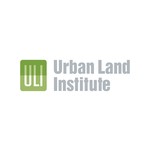HONG KONG & SINGAPORE–(BUSINESS WIRE)–#AsiaPacific–The 17th edition of the Emerging Trends in Real Estate® Asia Pacific Report, the regional real estate forecast jointly published by the Urban Land Institute (ULI) and PwC highlights a downtick in investor sentiment due to concerns over the rising cost of debt, higher inflation, and a looming global recession. The report is based on a survey of 233 real estate professionals and 101 interviews with investors, developers, property company representatives, and lender brokers.
The persistence of global inflationary trends, a recessionary economy, and deterioration of global indicators saw investors opting to suspend buying until the fallout from synchronised global rate hikes becomes clearer. A dip in regional transaction volumes is apparent, with third-quarter deal count in the Asia Pacific falling 38 percent year-on-year to US$32.6 billion, recording the lowest third-quarter volumes for a decade in the region. Mainland China accounts for the biggest decline with a fall of 23 percent year-on-year.
David Faulkner, President of ULI Asia Pacific, said, “Rising interest rates and the slowing global economy are beginning to impact regional asset valuations and changing the way investors assess potential deals. As a long-term inflation hedge, real estate will continue to draw capital, but the industry is also likely to undergo significant change over the coming years, due to the evolving economic environment and changes in the ways that people use the built environment.”
The top markets for investment prospects in the region were characterised by deep, liquid markets and a flight-to-safety approach. Singapore, Tokyo and Sydney continue to rank as the top three markets. With the ongoing liquidity crisis in Mainland China’s property sector and persistent pandemic restrictions, Singapore has benefitted from the redirection of capital that might otherwise have been placed in assets in Mainland China and Hong Kong SAR. Tokyo continues to enjoy a near-zero interest rate environment, which ensures lower borrowing costs and a more positive spread over the cost of debt. Despite the easing of COVID restrictions in Hong Kong SAR, its status as the most expensive commercial and residential market in the Asia Pacific has made it vulnerable amidst the current high-inflation recessionary environment.
Stuart Porter, Asia Pacific Real Estate Tax Leader said, “The persistence of fragmented market conditions has enabled Singapore and Tokyo to retain their top spots as the cities with the brightest investment prospects although the factors augmenting each city do markedly differ. When exploring opportunities in the region, investors should take a more cautious approach on new asset purchases in some Asian markets and pivot their focus from conventional asset classes towards a variety of niche areas that offer brighter outlook. This include defensive havens and new-economy themes, which are likely to divert the attention away from mainstream assets such as the office and retail sector, that have traditionally been popular.”
Investors have begun to realign strategies towards defensive properties more resilient to unusual economic pressures, and towards assets that can offer features such as rent indexation, shorter lease term and reliable recurrent incomes. The multifamily, hotels, senior living, and logistics sectors are deemed as defensive havens. New economy sub-sectors such as data centres, cold storage infrastructure, life science facilities, and the self-storage space have had increasing attention as recession-resistant investment vehicles, owing to a confluence of factors: growing 5G takeup, structural undersupply to meet demand, and the evolution of more sophisticated supply chains. With US$16 billion in new capital raised for opportunistic strategies across these sub-sectors in Asia Pacific – more than three times the total raised for 2021 – logistics is likely to remain sticky for investors going into 2023.
With inflationary pressures and interest rates heightening development risk, longer-dated development projects are being put on hold. Investors are also adapting their underwriting by making provisions for higher exit cap rates, trimming of use of debt, purchasing materials in advance, as well as employing a “value engineering” approach – seeking economies via more rigorous analysis of design brief parameters.
The office sector remains the biggest asset class in the region. Prime assets in business precincts and districts are invariably in short supply and are constantly the targets of regional core funds competing to place capital. At the same time, wide pricing gaps between buyers and sellers are expected to persist for some time.
The full report is available here.
About the Urban Land Institute
The Urban Land Institute’s (ULI) mission is to shape the future of the built environment for transformative impact in communities worldwide. ULI has more than 2,600 members in the Asia Pacific region. For more information on ULI Asia Pacific, visit asia.uli.org.
About PwC – Globally
At PwC, our purpose is to build trust in society and solve important problems. We are a network of firms in 152 countries with nearly 328,000 people who are committed to delivering quality in assurance, advisory and tax services. Find out more and tell us what matters to you by visiting us at www.pwc.com.
PwC refers to the PwC network and/or one or more of its member firms, each of which is a separate legal entity. Please see www.pwc.com/structure for further details.
Contacts
ULI Media Enquiries: media@uli.org






